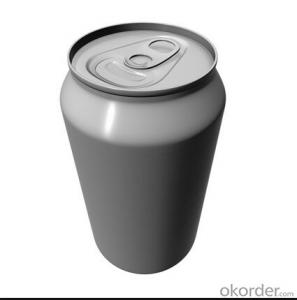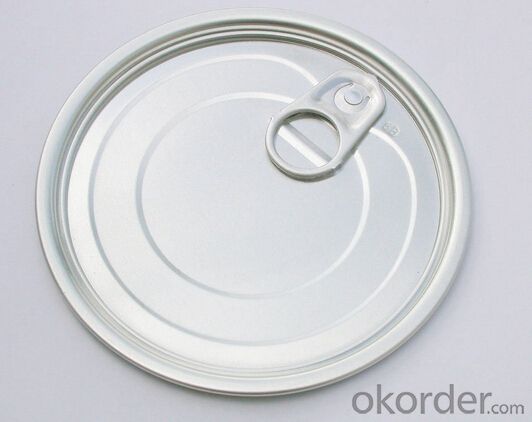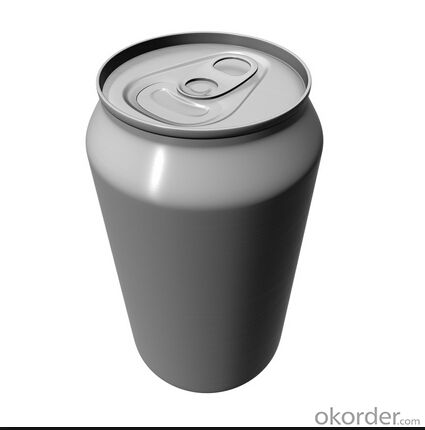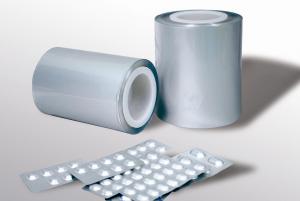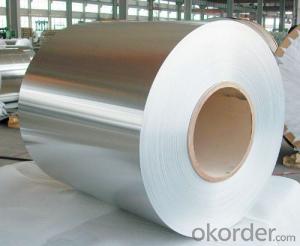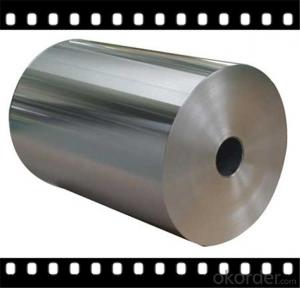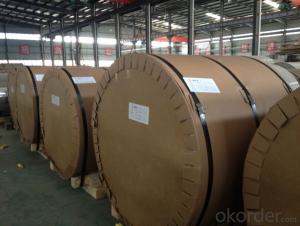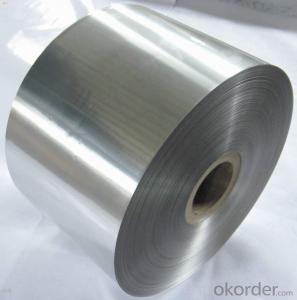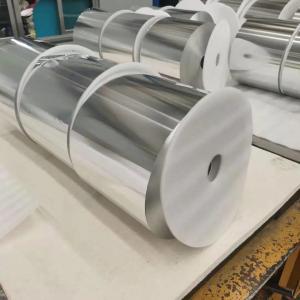Aluminum Beverage Can Made in China with High Quality
- Loading Port:
- Guangzhou
- Payment Terms:
- TT or LC
- Min Order Qty:
- 3710000 pc
- Supply Capability:
- 100000000 pc/month
OKorder Service Pledge
OKorder Financial Service
You Might Also Like
1.Structure of Aluminum Beverage Can Description:
An Aluminum Beverage can is a container for packaging made primarily of aluminum (BrE aluminium).It is commonly used for foods and beverages.Aluminum cans are made of two pieces. The bottom and body are "drawn" or "drawn and ironed" from a flat plate or shallow cup. After filling, the can "end" is sealed onto the top of the can.Aluminum offers greater malleability, resulting in ease of manufacture; this gave rise to the two-piece can, where all but the top of the can is simply stamped out of a single piece of aluminium, rather than laboriously constructed from two pieces of steel. A label is either printed directly on the side of the can or will be glued to the outside of the curved surface, indicating its contents.
2.Main Features of the Aluminum Beverage Can :
1)light weight
2)competitive cost
3)usage of easy-open aluminum ends: no need for a can opener
4)clean appearance
5)aluminum does not rust
3.Aluminum Beverage Can Image:
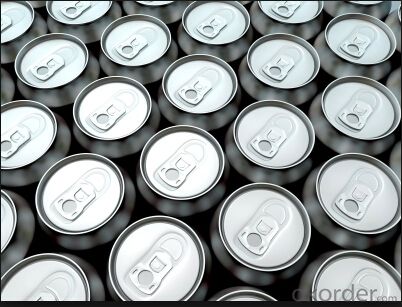
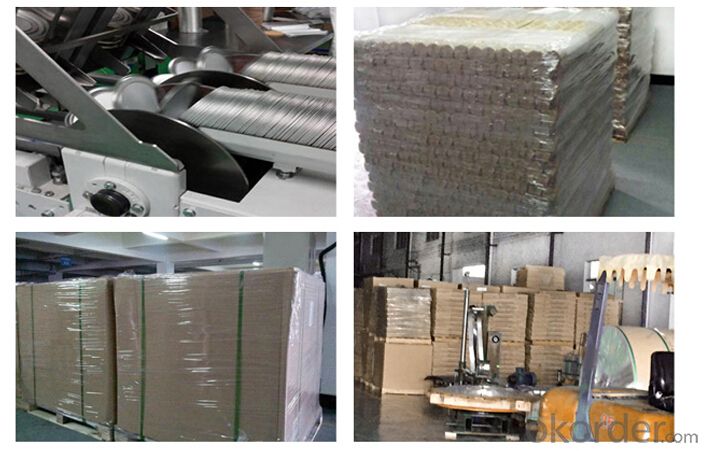
4.Aluminum Beverage Can Specification:
Item No. | 200 # |
Shape/type | Round |
Size(mm) | Dia 50mm |
Coating | Gold inside & Clear outside |
Material | Aluminum |
Pcs/20 GP’ | 3,710,000pcs per 20 GP or Customize packing: as clients’ requests. |
Features | 1.Used for packaging of beverage,such as juice,soda,energy drink,etc. 2.Coating can be according to customer required.
|
5.FAQ:
1)Q: What is the material of your products?
A: The material are mainly tinplate and Aluminium
2)Q: Can you make new mold with customized size I need?
A: YES, We can make mold for you .
3)Q: How does your factory do regarding quality control?
A : Our company has a professional EOE testing and managing team, providing customers with quality and reliable products through strict control of process analysis, implementation of the HACCP system, combined with top testing equipments and specified rational testing standards.
6.Certificate:
1)Top Fortune Global 500

2)SGS Certificate
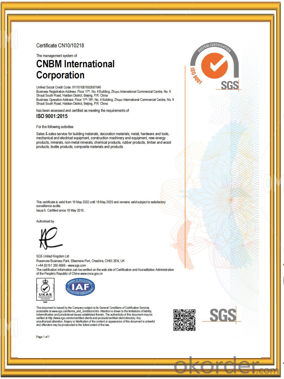
- Q:How are aluminum coils used in the production of beverage cans?
- Aluminum coils are used in the production of beverage cans as they are rolled into thin sheets and then shaped into the cylindrical form of a can. These coils provide the necessary material for manufacturing cans, allowing them to be lightweight, durable, and resistant to corrosion.
- Q:What is the typical coefficient of friction for aluminum coils?
- The typical coefficient of friction for aluminum coils can vary depending on various factors such as the surface conditions, lubrication, and the specific type of aluminum alloy used. However, in general, the coefficient of friction for aluminum coils is relatively low compared to other materials. It typically falls within the range of 0.1 to 0.4.
- Q:Can aluminum coils be used in power generation facilities?
- Yes, aluminum coils can be used in power generation facilities. Aluminum is a highly conductive material that offers several advantages for power generation applications. It has excellent thermal conductivity, meaning it can efficiently transfer heat away from the coils, which is crucial for cooling systems in power generation facilities. Additionally, aluminum is lightweight, making it easier to handle and install compared to other metals like copper. This lightweight property also reduces the overall weight of the equipment, resulting in cost savings. Furthermore, aluminum is corrosion-resistant, which is important for power generation facilities that often operate in harsh environments. Overall, aluminum coils are a viable option for power generation facilities due to their conductivity, thermal efficiency, lightweight nature, and corrosion resistance.
- Q:What are the common sizes of aluminum coils?
- Common sizes of aluminum coils vary depending on the specific industry and application. However, some standard sizes are commonly used across different industries. For the construction industry, common sizes of aluminum coils range from 0.018 inches to 0.032 inches in thickness and can have widths from 12 inches to 60 inches. These coils are typically used for roofing, siding, and gutter applications. In the automotive industry, aluminum coils are often used for manufacturing various parts, such as body panels and structural components. The sizes of these coils can vary greatly, ranging from thin strips for small parts to larger coils with widths of up to 72 inches for larger components. For the packaging industry, aluminum coils are used to produce foil products, such as food packaging and industrial packaging. The thickness of these coils can range from 0.00017 inches to 0.0005 inches, while the widths commonly range from 12 inches to 24 inches. It's important to note that these are just some of the common sizes, and specific applications may require custom sizes of aluminum coils. Additionally, manufacturers often have the capability to produce coils in various sizes to meet the specific needs of their customers.
- Q:where is aluminum found in the world or in the universe?do u think aluminum is more valuable to people than gold?why or why not?im just lazy to look up the answers and person 4 best answer 10points
- where is aluminum found in the world aluminum is in fact the third most common element in the Earth's crust, and it is the most common metallic element on Earth. In a pure form, aluminum is silvery white and extremely lightweight. aluminum is more valuable to people than gold? aluminum continues to remake the modern world. We can see it everywhere; in architecture, transportation, electrical cables, communications and consumer products. Because it’s light-weight, strong, versatile and easy to recycle, aluminum is becoming more and more valuable in our daily lives melting point and boiling point Melting Point: 933.437 K (660.323°C or 1220.581°F) Boiling Point: 2792 K (2519°C or 4566°F)
- Q:Are aluminum coils suitable for air conditioning systems?
- Yes, aluminum coils are suitable for air conditioning systems. Aluminum coils are commonly used in air conditioning systems due to their many advantages. Firstly, aluminum is a lightweight material, making it easier to handle and transport during installation. This also reduces the overall weight of the unit, making it more energy-efficient. Furthermore, aluminum coils have excellent heat transfer properties, allowing for efficient cooling of the air. They provide enhanced thermal conductivity, which helps in transferring heat quickly and effectively. This results in better cooling performance and improved energy efficiency, reducing electricity consumption and saving costs in the long run. Aluminum coils also offer superior corrosion resistance compared to other materials like copper. This is important in air conditioning systems, as they are exposed to moisture and humidity. Aluminum coils can withstand these conditions without corroding or deteriorating, ensuring longer lifespan and reliable performance. Another advantage of aluminum coils is their affordability. Aluminum is a cost-effective material, making it a popular choice for air conditioning manufacturers. This affordability can translate to lower costs for consumers, making air conditioning systems more accessible and affordable. In conclusion, aluminum coils are suitable for air conditioning systems due to their lightweight, excellent heat transfer properties, corrosion resistance, and affordability. They provide efficient cooling, durability, and cost-effectiveness, making them a preferred choice for air conditioning units.
- Q:Can aluminum coils be used in the production of aluminum facades?
- Yes, aluminum coils can be used in the production of aluminum facades. Aluminum coils are commonly used as a raw material in the manufacturing process of aluminum facades. The coils are typically shaped, cut, and formed to create the desired design and dimensions of the facade. The use of aluminum coils provides durability, versatility, and ease of installation in the production of aluminum facades.
- Q:What is the composition of aluminum coils?
- Pure aluminum coils typically contain 99.5% aluminum and trace amounts of other elements. Conversely, aluminum alloys are formed by blending aluminum with metals like copper, magnesium, manganese, or zinc. These alloys are specifically engineered to bolster the strength, corrosion resistance, and other desired characteristics of the aluminum coils. The precise composition of the coils may differ based on the particular application and requirements, but in general, they contain a significant proportion of aluminum along with small quantities of other elements to yield a sturdier and more effective product.
- Q:How do aluminum coils contribute to energy-efficient lighting systems?
- Aluminum coils are essential components in energy-efficient lighting systems due to their unique properties and functionalities. Firstly, aluminum is an excellent conductor of electricity, allowing for efficient energy flow within the lighting system. This property ensures that minimal energy is lost during transmission, maximizing the overall energy efficiency of the system. Moreover, aluminum coils are lightweight and durable, making them ideal for use in lighting systems. The lightweight nature of aluminum allows for easier installation and handling, reducing the overall energy required during the manufacturing and installation processes. Additionally, aluminum's durability ensures that the coils can withstand the rigors of daily use without compromising performance, further contributing to the longevity and efficiency of the lighting system. Furthermore, aluminum has excellent thermal conductivity, allowing for efficient heat dissipation. Heat management is crucial in lighting systems as excessive heat can reduce the lifespan and efficiency of the bulbs. By using aluminum coils, the heat generated by the lighting system can be effectively dispersed, minimizing the risk of overheating and ensuring optimal performance. In summary, aluminum coils contribute to energy-efficient lighting systems by providing efficient electrical conductivity, lightweight and durable construction, and effective heat dissipation. These properties help to minimize energy loss, reduce manufacturing and installation energy requirements, and enhance the overall efficiency and longevity of the lighting system.
- Q:Are aluminum coils available in custom sizes?
- Indeed, custom sizes for aluminum coils are readily obtainable. Aluminum coils exhibit great versatility and can be produced to satisfy particular size specifications. This adaptability enables their utilization in a diverse array of industries. Be it for HVAC systems, transportation, construction, or any other purpose, aluminum coils can be specifically tailored to suit the unique requirements of any given project. The provision of custom-sized aluminum coils guarantees an impeccable fit and outstanding performance, thereby promoting enhanced efficiency and cost-effectiveness.
1. Manufacturer Overview |
|
|---|---|
| Location | |
| Year Established | |
| Annual Output Value | |
| Main Markets | |
| Company Certifications | |
2. Manufacturer Certificates |
|
|---|---|
| a) Certification Name | |
| Range | |
| Reference | |
| Validity Period | |
3. Manufacturer Capability |
|
|---|---|
| a)Trade Capacity | |
| Nearest Port | |
| Export Percentage | |
| No.of Employees in Trade Department | |
| Language Spoken: | |
| b)Factory Information | |
| Factory Size: | |
| No. of Production Lines | |
| Contract Manufacturing | |
| Product Price Range | |
Send your message to us
Aluminum Beverage Can Made in China with High Quality
- Loading Port:
- Guangzhou
- Payment Terms:
- TT or LC
- Min Order Qty:
- 3710000 pc
- Supply Capability:
- 100000000 pc/month
Offcanvas right
OKorder Service Pledge
OKorder Financial Service
Similar products
New products
Hot products
Hot Searches
Related keywords

